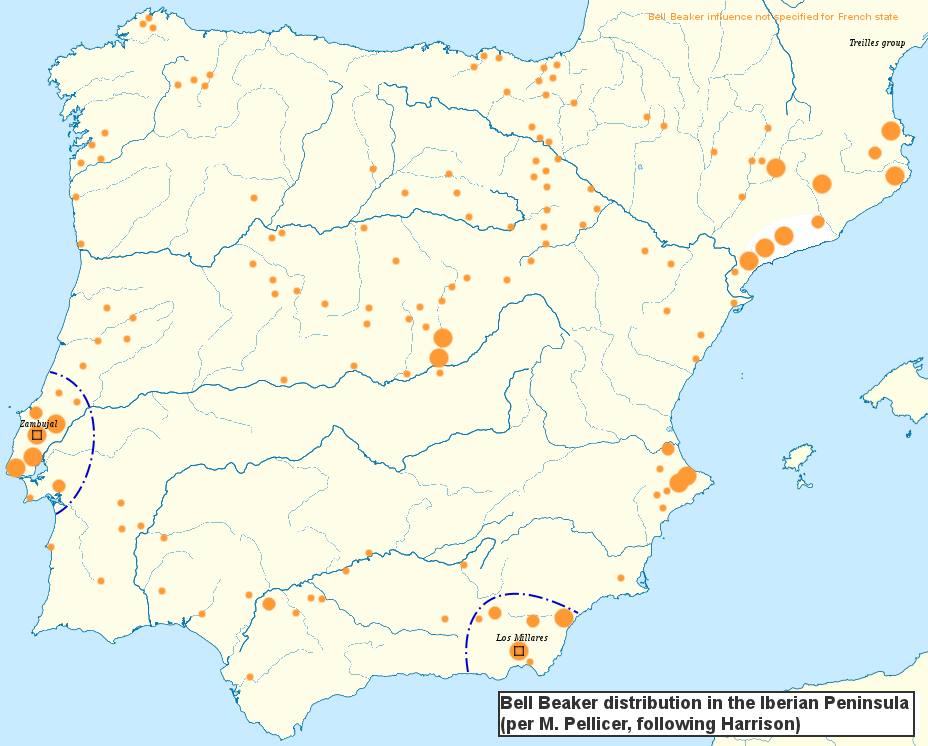Tomenable;479662]Is it about me ??? Of course I'm not saying that metallurgy came to Europe from Yamnaya.
I'm saying that R1b men from the Balkans or from the Middle East introduced metallurgy to Yamnaya.
No, I wasn't thinking of you. As to the second statement, how can we possibly know whether the metal workers of the Balkans were R1b? The likelihood is surely greater at this point that they were either G2a like Oetzi or I2a. That's not to say there might not have been some R1b among them. The point is that this is total speculation with not one scrap of data upon which to base it.
They were just native Farmers of the area - not people responsible for spreading metallurgy.
No, actually they weren't just native farmers of the area. They had many of the indicia of an Indo-European culture. That's why Gimbutas, David Anthony, and Jean Manco were originally convinced that they were people of the steppe. They were also indeed skilled metallurgists.
See:
http://www.anthrogenica.com/archive/index.php/t-2685.html
"
Yamnaya elements in the Remedello culture, such as single graves, copper-arsenic alloys and tanged daggers."
"
The Remedello-Rinaldone complex (3200-2500 B.C.) bears all the marks of an Indo-European invasion: a new style of ceramics, a new burial rite, changes in the social structure, the introduction of a warrior aristocracy, the introduction of metallurgy, the horse and the chariot."
The Remedello samples from Allentoft et al are all I2a and are dated as follows:
Sample: RISE487
cal BC: 3483-3107 cal BC (Remedello I)
Sample: RISE489
cal BC: 2908-2578 cal BC (Remedello I-II)
Sample: RISE486
cal BC: 2134-1773 cal BC (Remedello III)
Two out of the three are after David Anthony's dates for the move up the Danube of the Yamnaya people (the earliest date given is 3100 BC and the later one is 2800 BC). One out of the three is very late indeed. Yet, still I2a and still autosomally Oetzi like.
Obviously, they were also already working with arsenical copper in Remedello I, before any of these movements, because Oetzi was carrying a Remedello style copper ax in 3300 BC.
I think the early technology probably thus did come from the Balkan However, there's no R1b around to date. (That early mine in Liguria is dated to 3500 BC.)
The Bell Beaker phase is not until 2400 BC, and the Bell Beaker metallurgy here is actually less advanced, which makes me think that if there was any influx of steppe people, this is when it took place.
The only autosomal change is in the very late Bell Beaker phase, in one sample, and it's very slight.
http://www.anthrogenica.com/archive/index.php/t-1389.html
See: Allentoft et al:
http://www.nature.com/nature/journal/v522/n7555/full/nature14507.html
Cultural and technological changes are not always brought about by large movements of people. The Fu et al paper has pointed that out in showing that regardless of the cultural similarities the Gravettian of Europe had nothing to do with Mal'ta.
What does it mean "copper worker" - physical labourer, simple miner? Surely not a skilled blacksmith.
All we know is that he carried a Remedello style ax, from metal mined in Italy, and they found copper and arsenic during an analysis of his hair, so metallurgy was taking place and he was taking part in it.
"
Ötzi’s hair also offered clues about the time in which he lived and his potential occupation. Analysis of Ötzi’s hair found traces of arsenic and copper particles and when combined with the copper axe which was found alongside his remains, some researchers have determined that he was involved in copper smelting."
[h=3]A close examination – Ötzi’s axe[/h]
The metal for the axe edge was smelted from copper ore. It was then heated into a molten state and cast. Finally shaping was accomplished by cold-forging. The edge shows clear signs of use and resharpening with a whetstone.
I suppose it's also possible that Otzi got that copper and arsenic in him when sharpening the blade?
Now, since Otzi and his ax are dated to 3300 BC, and the axe is Remedello type, the people of Remedello were doing this work before any movement from the steppe. (In fact, Otzi's axe is older than the oldest Remedello axe found.)Again, I think it's Balkan and if the technology was not brought by G2a people, might have been brought by I2a people. After all, Remedello seems to be all I2a, and for hundreds of years.
https://books.google.com/books?id=k...tzi's copper ax-was it Remedello type&f=false

